Woodland Clean Up
The neighborhood in which I live is managed by a Homeowner’s Association. This is not my first choice of arrangement, but it’s the one we have. The HOA is paid dues by the homeowners and those dues are put toward maintaining the community areas such as the pool, parking lot, the entrance, and in theory, the nature path that winds past the ponds in the center of the neighborhood.
My partner and I have always walked our dog Jinx on this path, and when we adopted Belle, she began to join us. The layout of the path is such that it starts from the pool parking lot and heads north, past the first of the ponds (which we have always called Top Pond, because we are very original). It splits into two directions, one path heading east to go toward what used to be an outdoor grilling area, and the other continuing north, down into a gulley, following the path of the small woodland stream that connects Top Pond to the main pond (which we’ve always just called The Pond, because again, we are very original). The path continues north along the western edge of the pond, turns right to follow the northern shoreline, and the comes back south to the narrow end of the pond, where a small wooden bridge spans about 4 feet of water to make a loop.
In all, the walk from our doorstep, to the ponds, around the circle and back is exactly a mile, so it makes the perfect path for walking or running, so we go down there often. So when I say that the theory is the HOA should tend the nature path, what I really mean is they never do. They used to mow every month, something I’m not a fan of, but gave that up at the start of the pandemic. They hired someone to weed wack, but again, not a fan. Most weeds are just native plants that have found a convenient patch of earth. Three years ago, when a beaver elected to make The Pond its home, the only maintenance provided by the HOA was to tear out the beaver dam and hire someone to trap the creature. This is also not a good thing.
All the while, invasive plants were creeping into the edges of the woodland. Kudzu tumbling over the top of crepe myrtle trees and leaping across distances to span the path and smother more. Multiflora roses bursting into brambles that weren’t there before. Privet stands so dense that it is actually dark beneath them, blocking out any light from reaching the native seed bank dormant in the soil. Japanese honeysuckle runs rampant too, attracting pollinators but felling young saplings while mimosa trees–gorgeous but horribly invasive–grow tall, die, and fall, only to be replaced by another.
So early this year, when I was prioritizing exercise for the sake of exercise, I chose to walk that mile every morning–except in absolutely pouring rain, because it can get very slippery down there when we get a rainstorm dropping inches in an hour–and began noticing these things. It was little discoveries at first, like the startling pink of a pinxterbloom azalea back in the woods. The tumble of honeysuckle weighing down a black cherry tree on the western edge. I brought a plastic bag with me to pick up litter as I walked, then realized that after I’d done that, it would be so simple to bring a pair of snips with me to cut back some of the encroaching brambles or to try to control some kudzu. Soon I was waist deep in plants, fighting with a thorny olive vine that had the audacity to punch a hole in my glove. My toolkit grew, expanding from one pair of snips to include my gardening gloves, a small folding saw, a trowel–which was replaced a month later by the much more versatile hori hori–a hand rake, and more.
I learned as I went, swapping out my nitrile gardening gloves for tough leather gloves after getting stuck in the palm by some brambles one too many times. Recognizing Japanese honeysuckle as compared to coral honeysuckle on sight made it easier to feel confident at ripping up some of the vines. I pulled down privet stand after privet stand, allowing the sun to shine through and encourage the native seeds beneath to get their chance. I began marking the natives I found with nameplates so that others might learn, starting with a southern wax myrtle that had needed help just to the south of the bridge. I beat back some kudzu, helped along the natural dams forming in the creek bed, and shrieked in pure unadulterated joy when I saw that we’d had another beaver move back in. She soon had a friend join her, and they’ve been building dams and a den as they start their lives. The HOA promised that they wouldn’t do anything to the pair, as I expressed to them how vital beavers are to their ecosystem, and our new friends–who I lovingly call Hope and Chonk–aren’t in danger of damaging any private property.
Every day, I see someone from the neighborhood, and they ask me what I’m doing. I’ll say that I’m helping tend the pond and give them more information on the plants I’m touching at that point in time. I’ll explain how each plant fits into the ecosystem, or doesn’t, and my next few projects. And every time, I say, “if you ever feel like helping yourself, feel free.”
The ponds are ours. They belong, in the eyes of the law, to the HOA, of course, but the HOA represents hundreds of families. Each time I take up my shears to cut down swaths of Chinese bush clover, or cut down a kudzu vine that’s drowning a pine beneath its weight, I am telling the woodland that I am here for it, that I will help. It started with walking for walking’s sake, but it continues every single day for me now. I strap on my tool belt, grab a five gallon bucket, and tackle some small section of the woodland. It’s more exercise than I ever got just by walking; I come home dripping in sweat and with dirt smeared on my arms. I have watched sections of the woodland transform from crowded by invasive plants to a glen filled with a variety of native plants I didn’t even know to look for. And I won’t stop until we move. I only hope that some of my neighbors take up the mantle before I’m gone.
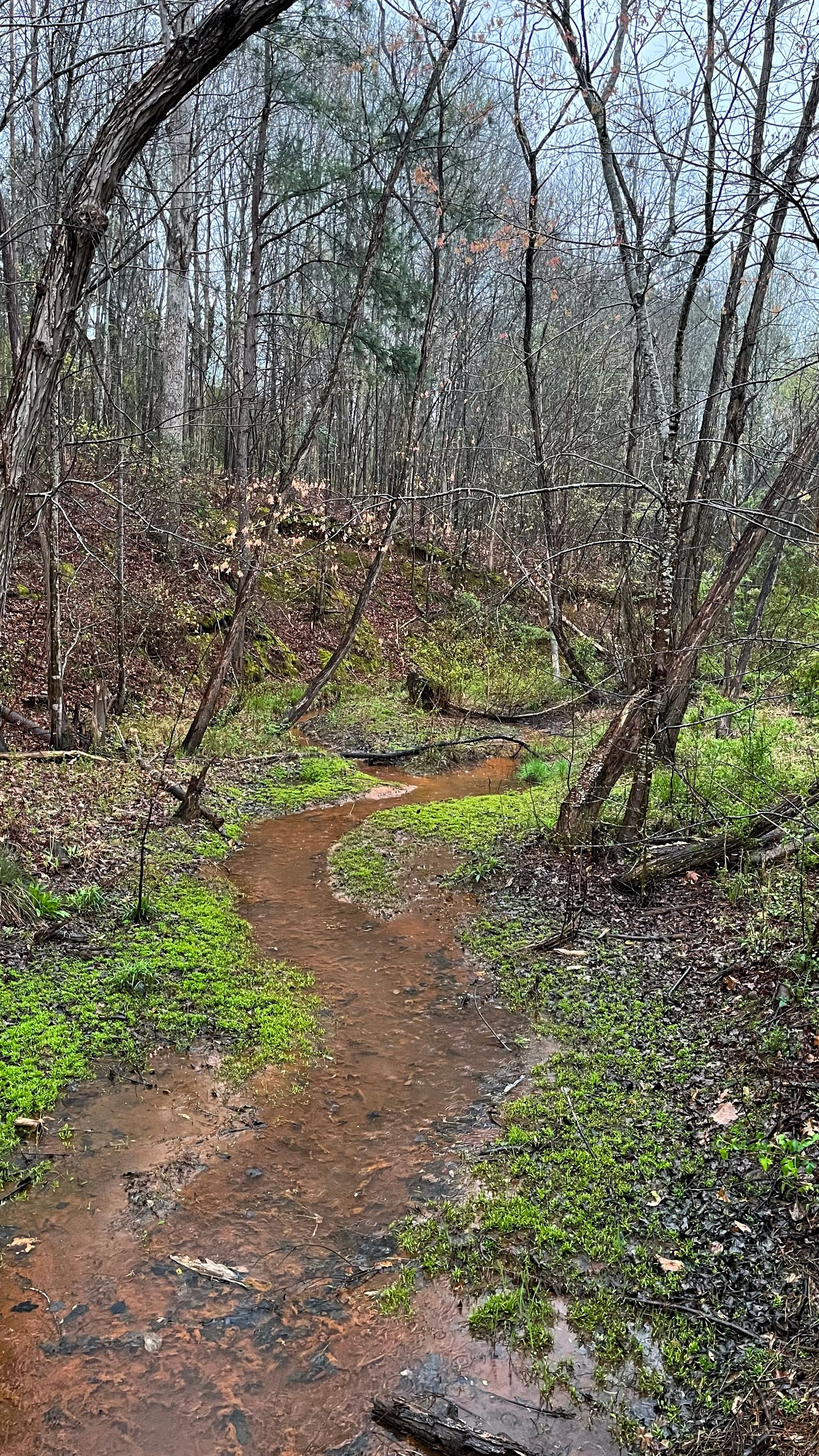 Where the creek meets The Pond, seen from the bridge
Where the creek meets The Pond, seen from the bridge
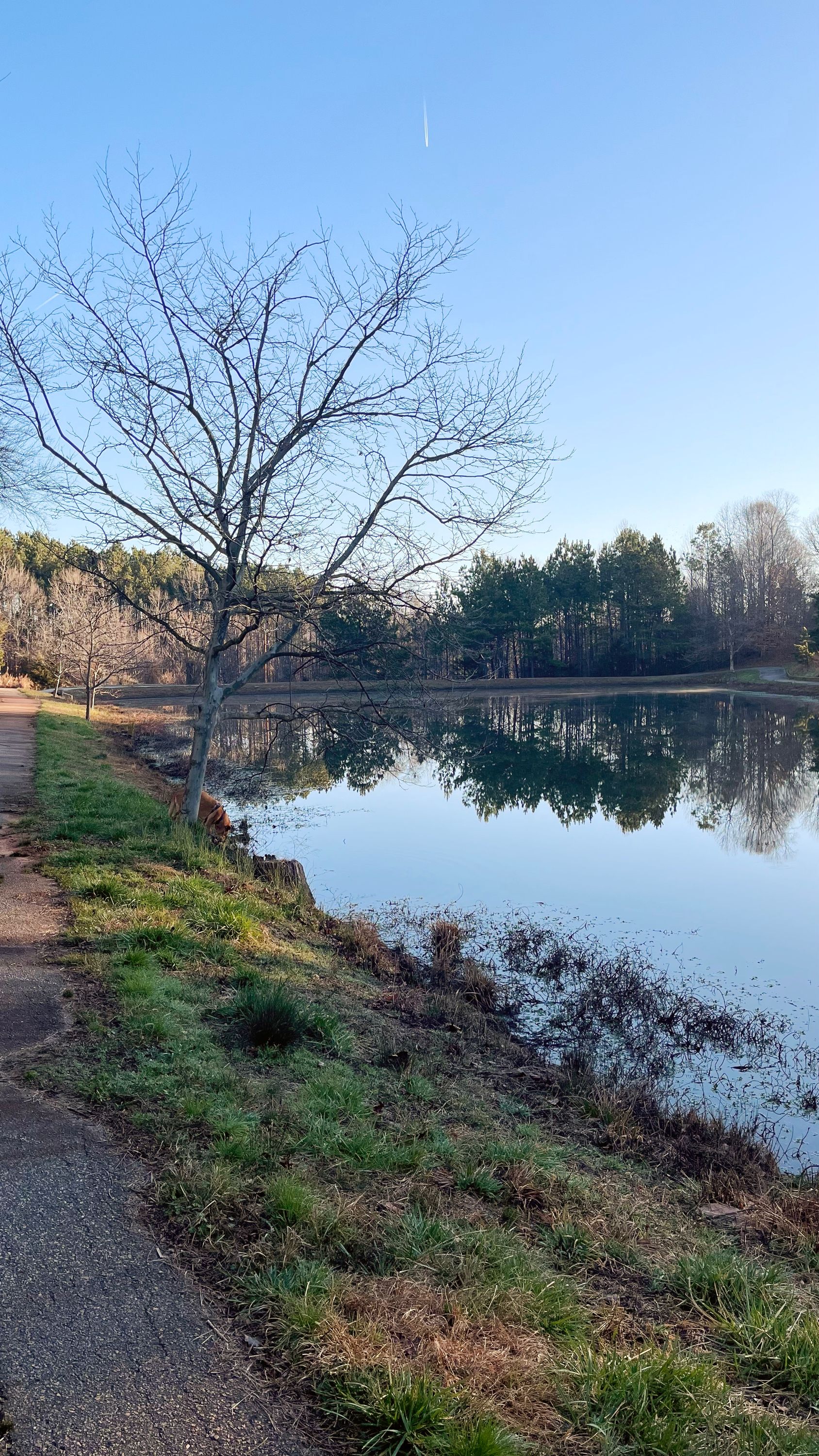 The Pond in late winter, with Jinx sniffing at the bank
The Pond in late winter, with Jinx sniffing at the bank
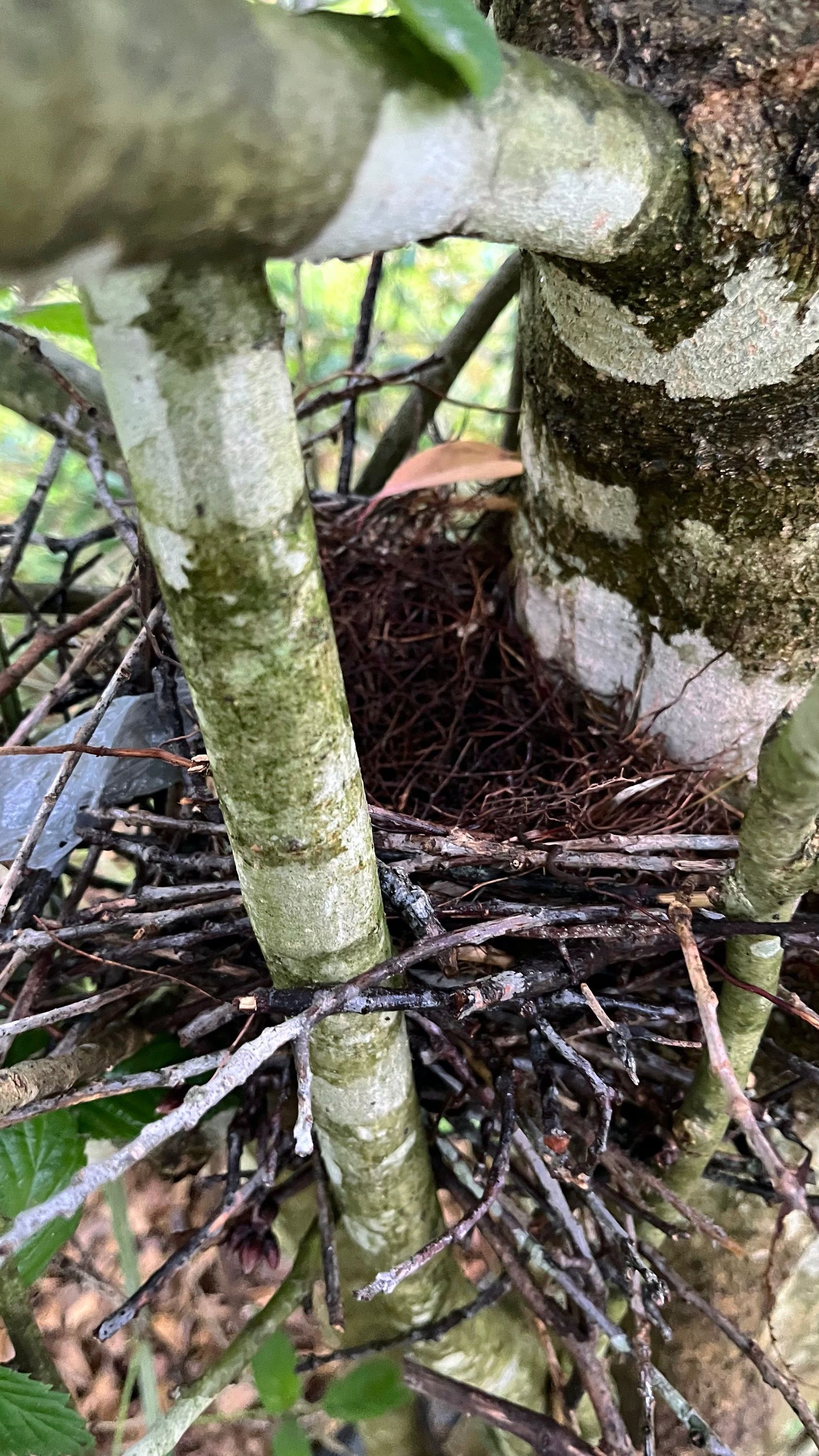 A nest in the crook of an American Holly tree, not in use
A nest in the crook of an American Holly tree, not in use
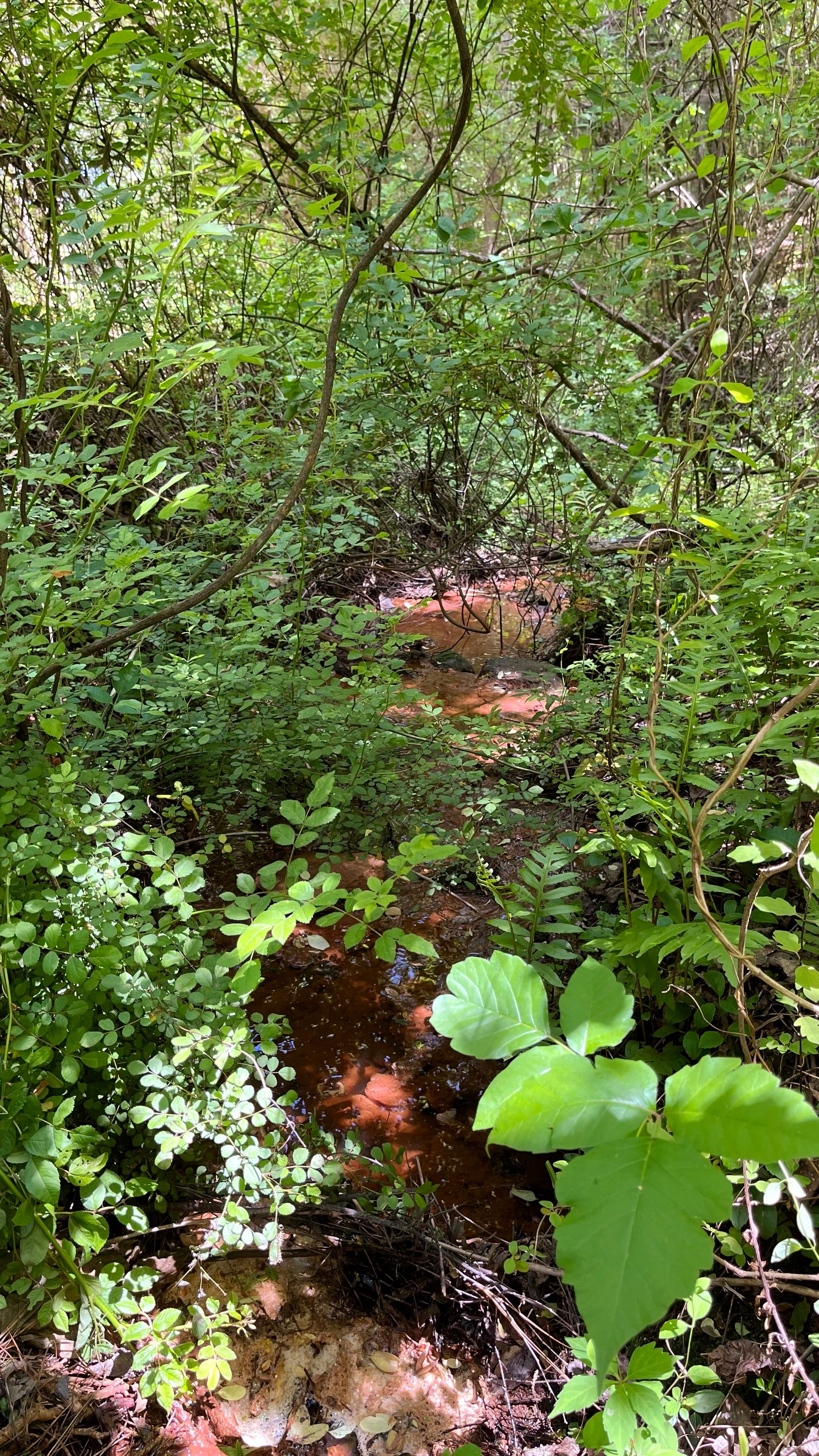 A view downstream from the top of a natural dam formed by a long-fallen tree
A view downstream from the top of a natural dam formed by a long-fallen tree
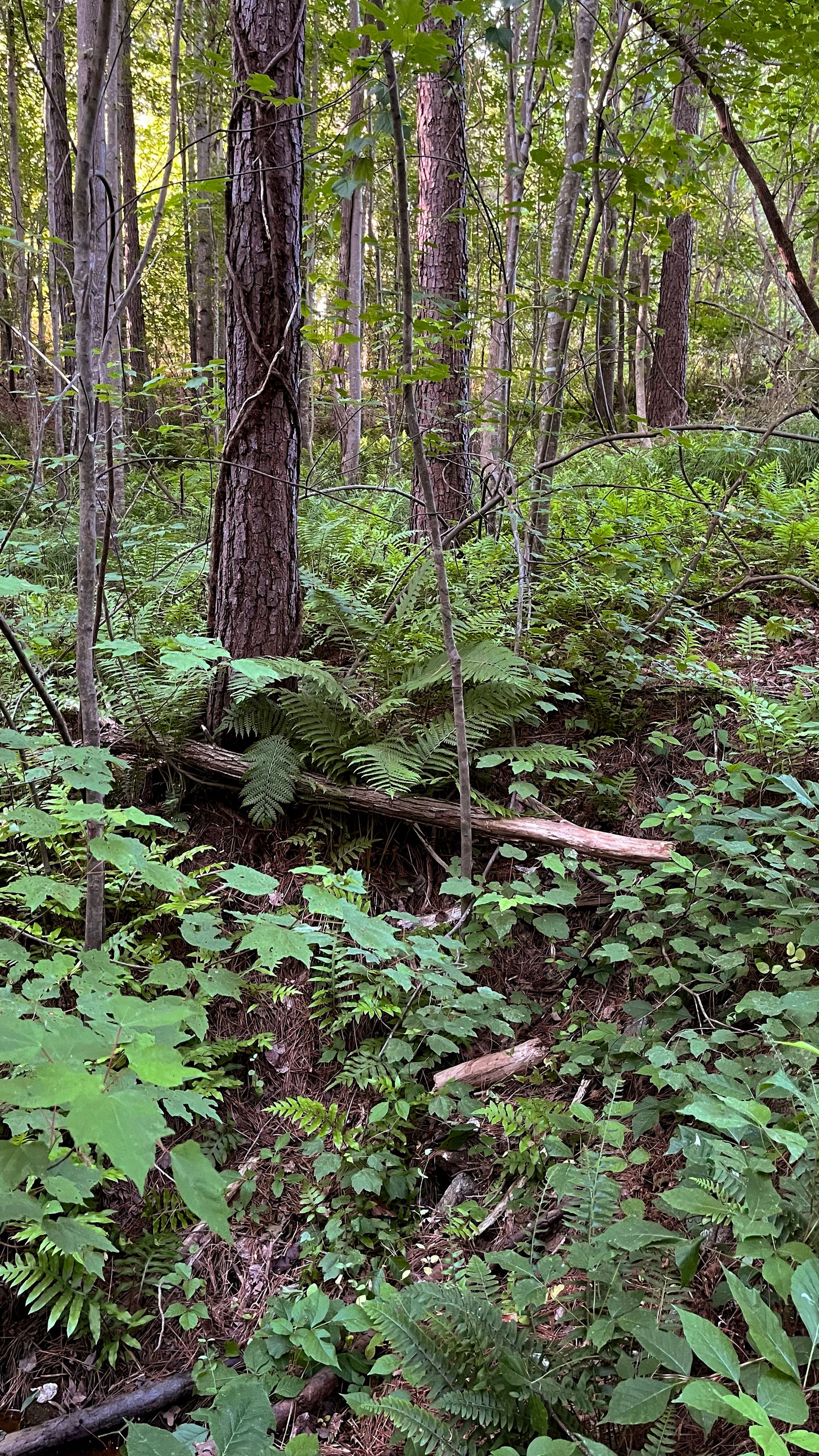 A glen filled with ferns in the early morning light
A glen filled with ferns in the early morning light
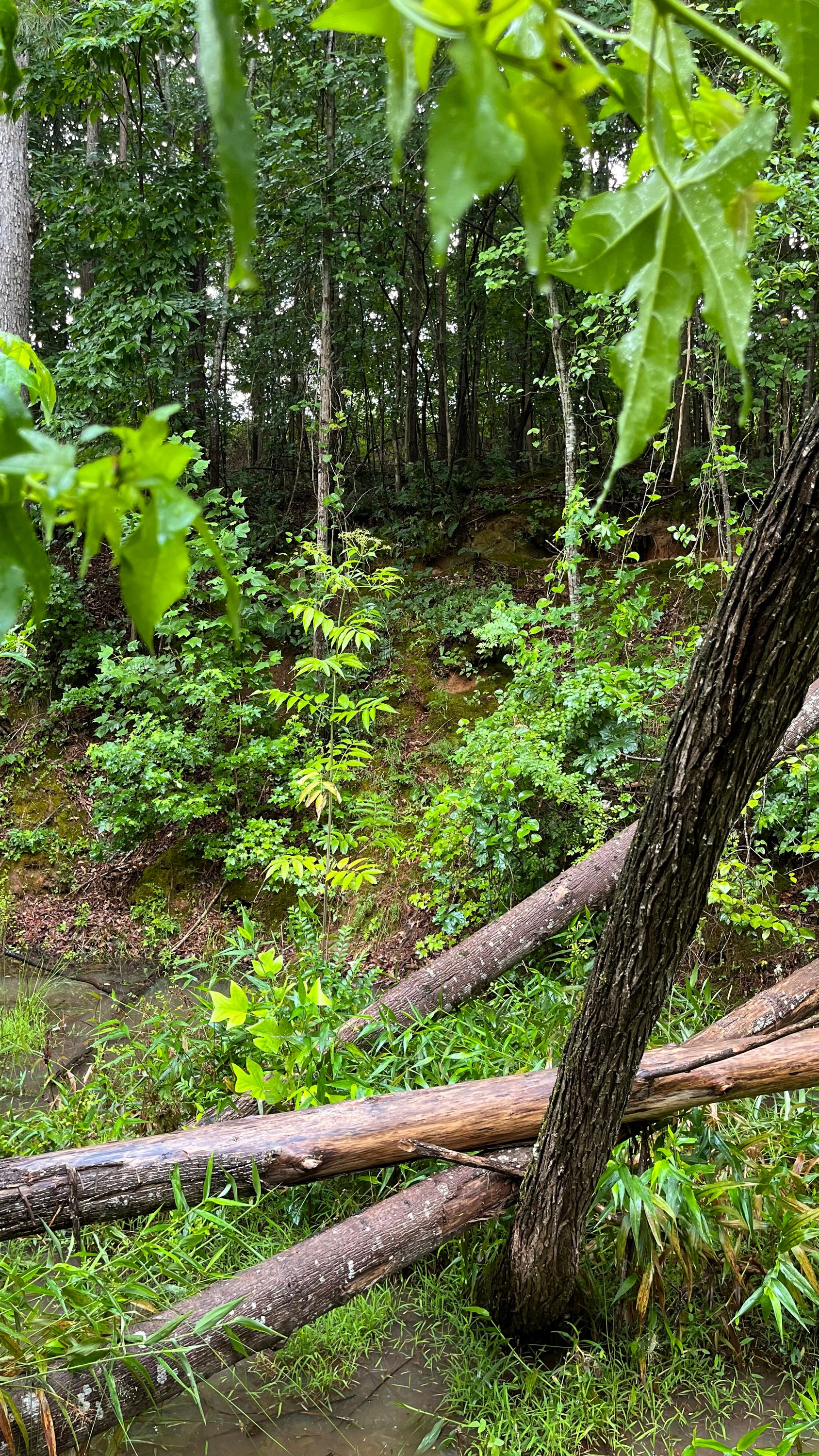 Where the creek meets the pond now that Hope & Chonky have built a dam to create a small marsh
Where the creek meets the pond now that Hope & Chonky have built a dam to create a small marsh
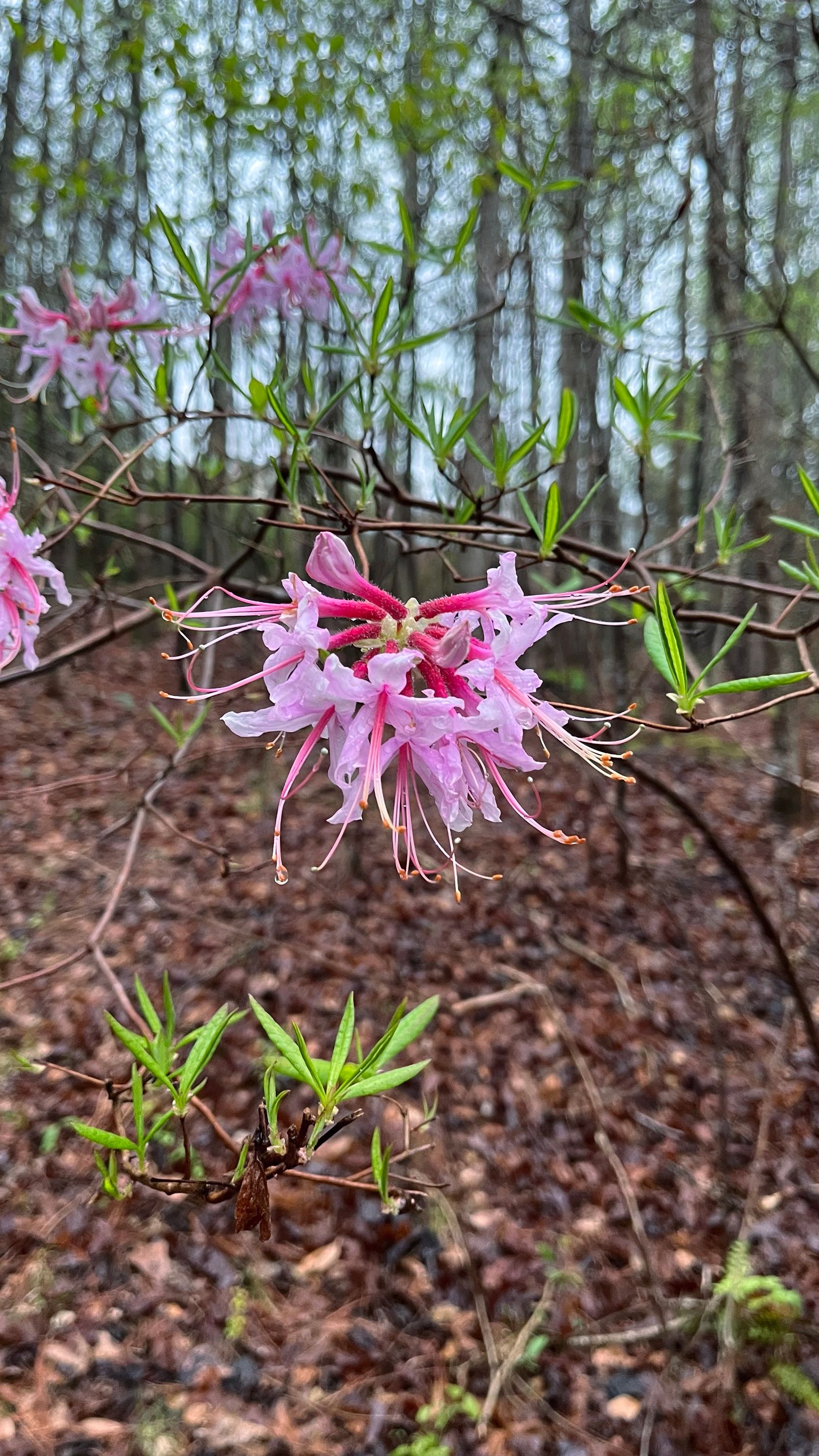 A pinxterbloom azalea in shocking bloom in early spring
A pinxterbloom azalea in shocking bloom in early spring
 A black cherry tree that was previously smothered
A black cherry tree that was previously smothered
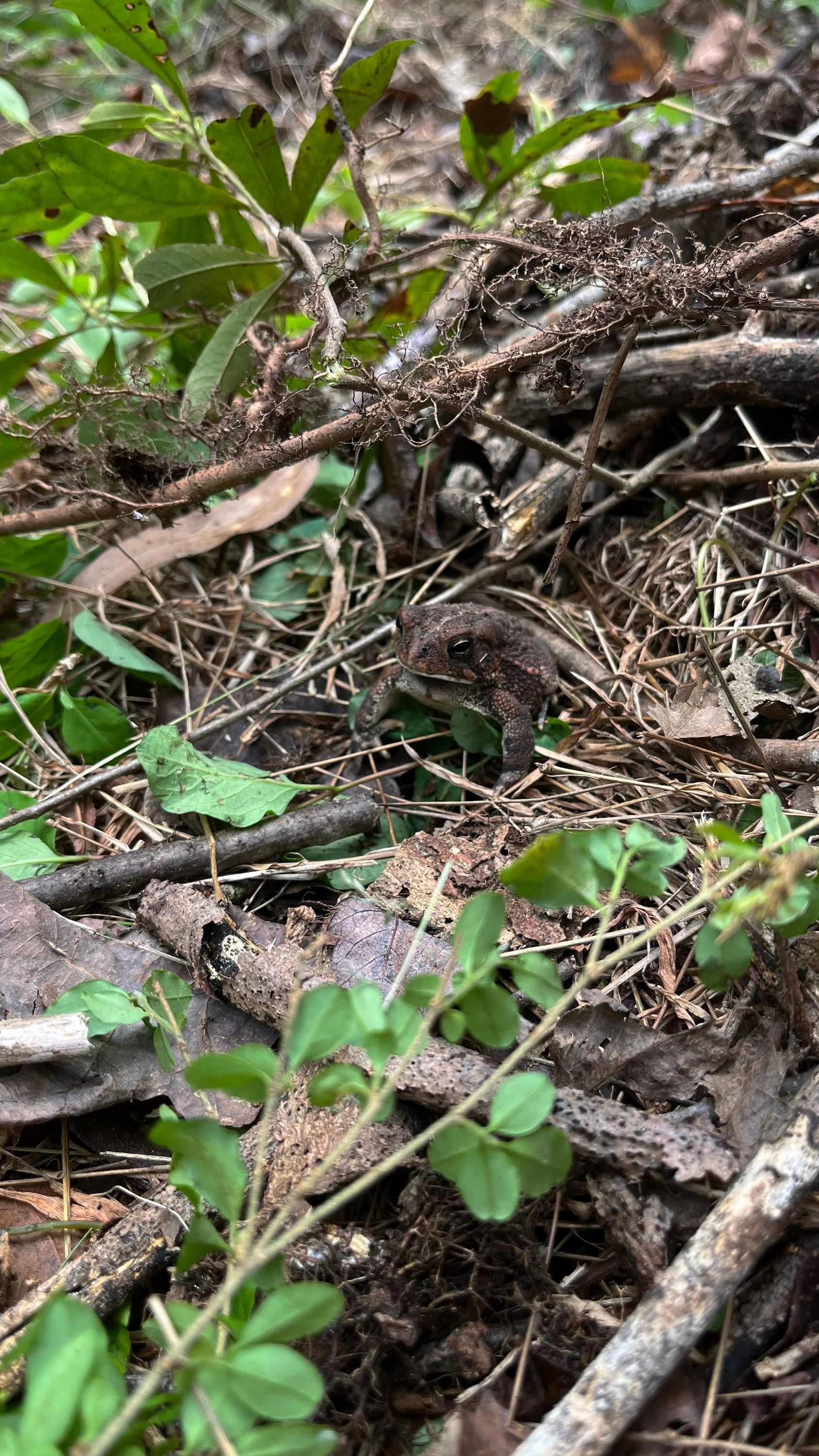 A woodhouse toad wondering what the heck I’m doing
A woodhouse toad wondering what the heck I’m doing
 Hope, the smaller of the two beavers, finding some delicious plants to munch
Hope, the smaller of the two beavers, finding some delicious plants to munch
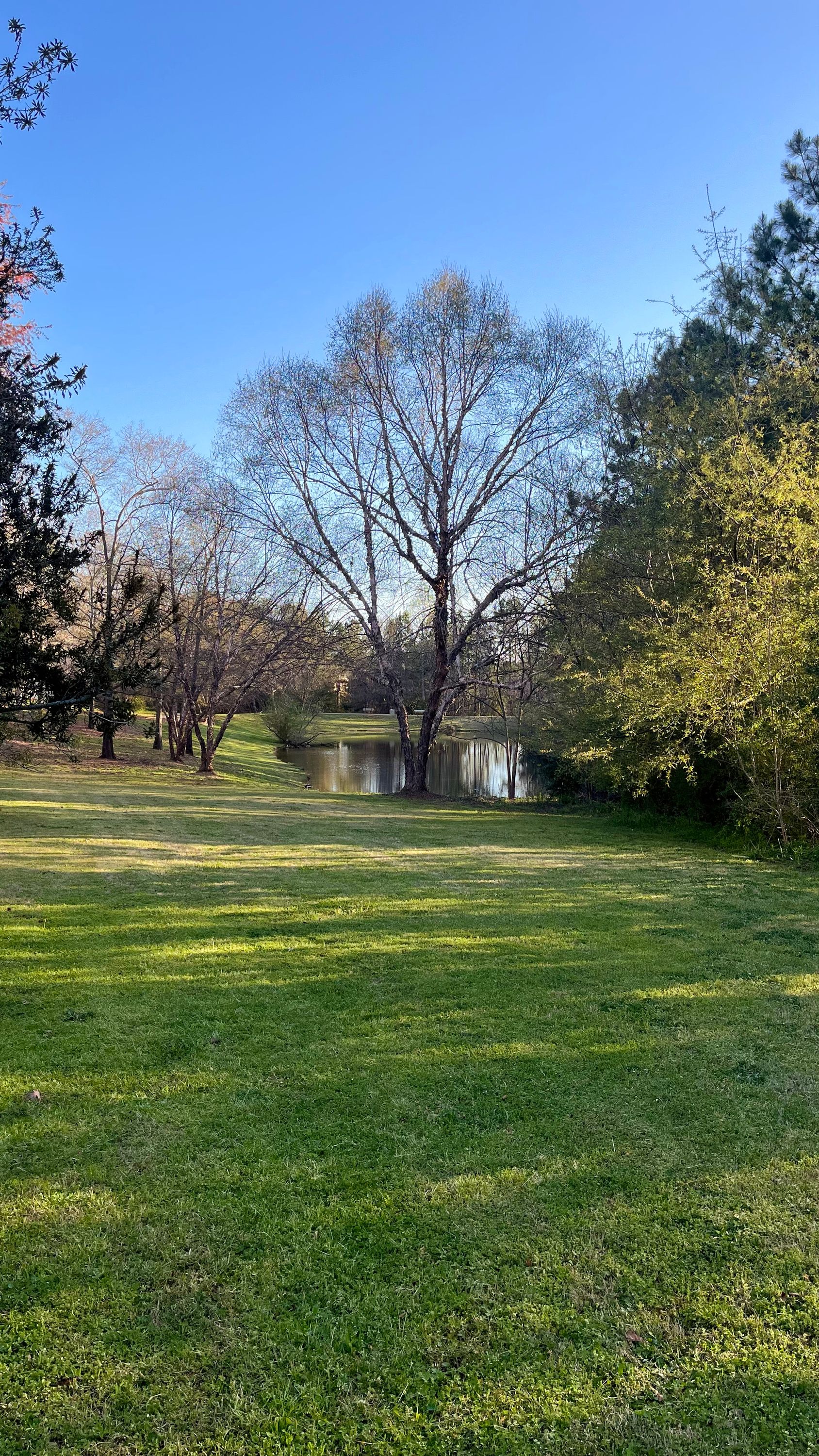 Top Pond, seen from the start of the nature path
Top Pond, seen from the start of the nature path
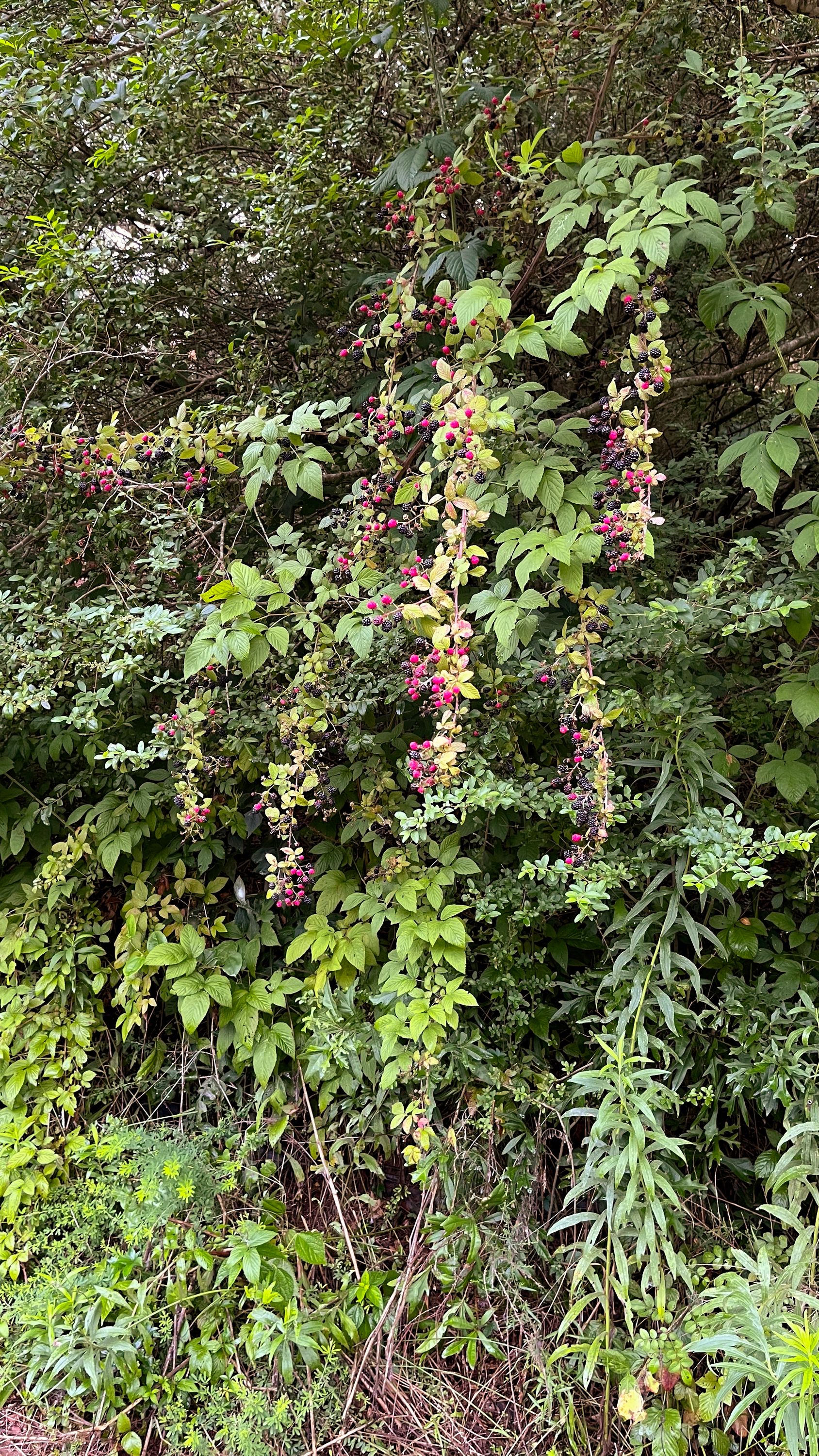 Blackberries and black raspberries fruiting at the woods edge on the west bank of The Pond in midsummer
Blackberries and black raspberries fruiting at the woods edge on the west bank of The Pond in midsummer
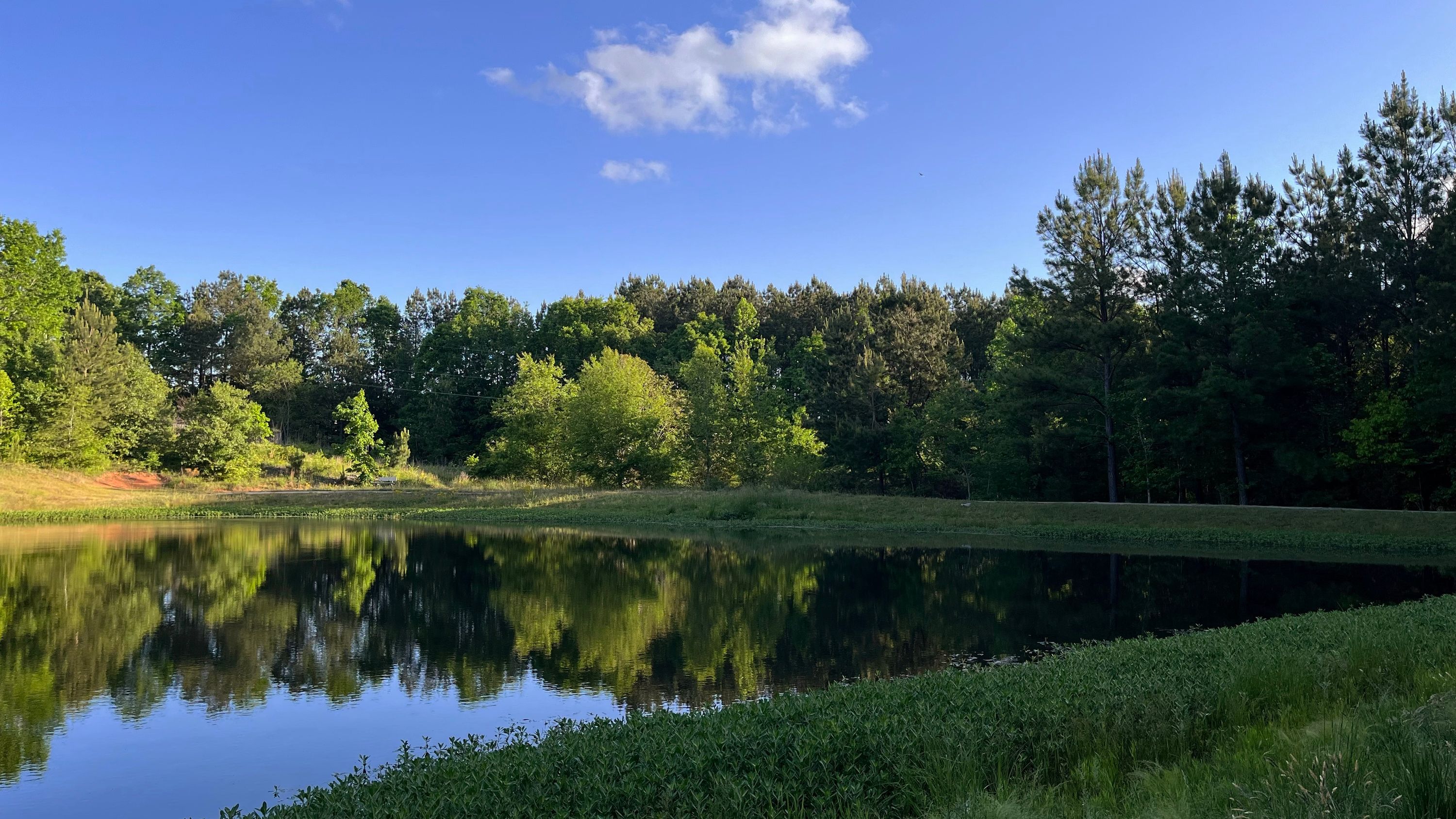 The north end of The Pond, seen from the eastern path
The north end of The Pond, seen from the eastern path
11 July 2022 native-plants projects plants
